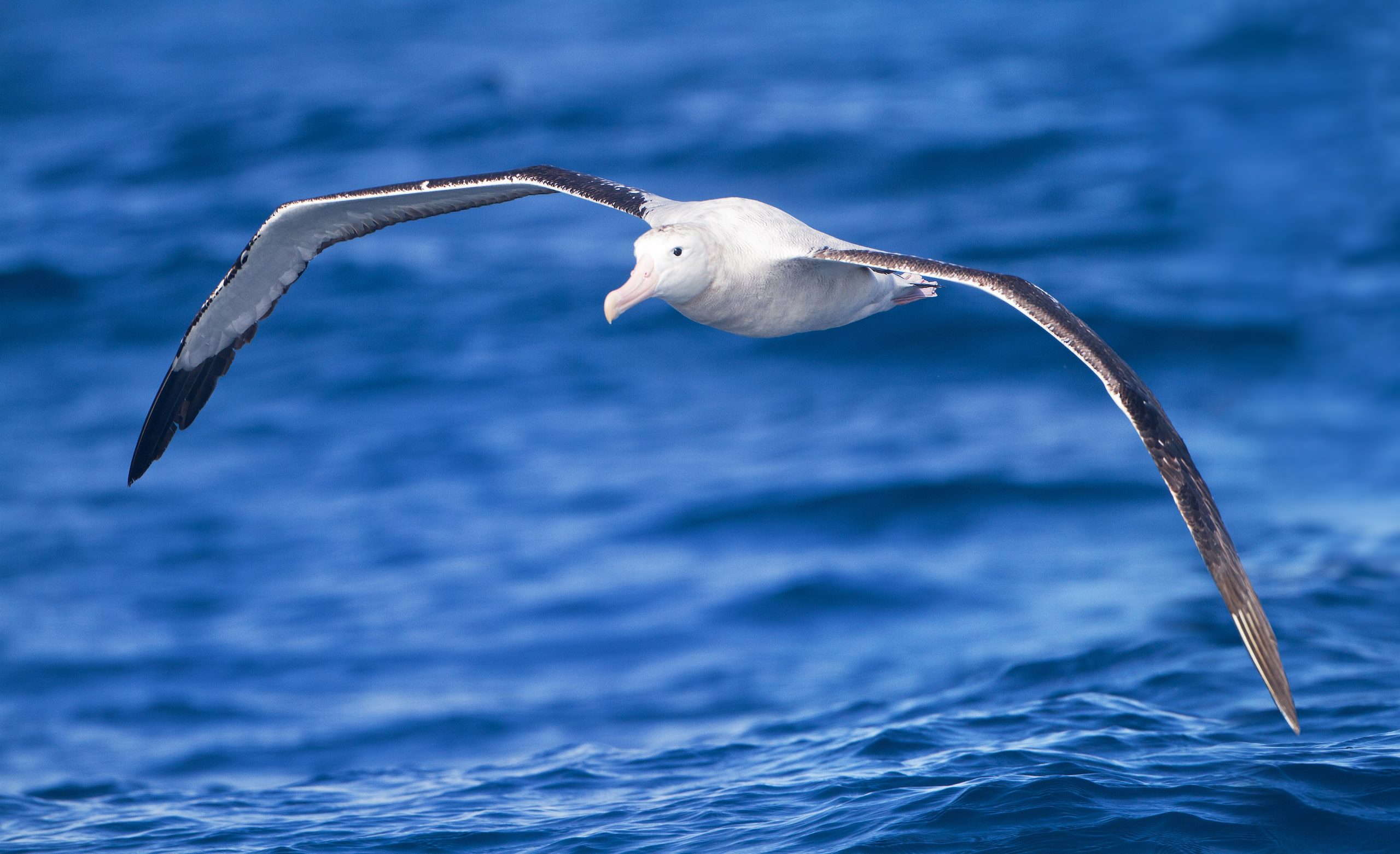How do albatrosses navigate the vast ocean without any static features for them to orient by? Delft researchers hope to unravel this mystery.
About a dozen albatrosses are flying around with tiny infrasound measuring devices on their backs. (Photo: Wikipedia)
In their quest for food to feed their partner who is guarding the egg during breeding season and later for the young, albatrosses can fly thousands of kilometres in just a couple of weeks’ time. Once loaded with enough proteins, they are perfectly able to return to their nest in a straight line. How is that even remotely possible?
Recent evidence suggests that pigeons adjust their behaviour in response to inaudible low-frequency sound waves, or infrasound. Geophysicists Olivier den Ouden of the Royal Netherlands Meteorological Institute (KNMI) and TU Delft (CEG faculty) and Jelle Assink (KNMI), are examining whether seabirds, and albatrosses in particular, may also use infrasound to navigate across the ocean.
An acoustic map
Possible infrasonic sources, which can be used as navigation ques, are ocean waves colliding with each other, or with the coastlines Perhaps this type of infrasound produces some kind of acoustic map which the birds use to find their way. In 2016 the TU Delft researchers teamed up with seabird ecologists from the University of Liverpool (UK), auditory experts from Stellenbosch University (South Africa) and statisticians from the University of Florida (USA), to find out.
Now, two years later, about a dozen albatrosses are flying around with tiny infrasound measuring devices on their backs. The field work is done on and around the Crozet Islands, in the French Sub-Antarctic. Lying at 46 degrees south, Crozet is in one of the most remote and windiest parts of the Earth.
The researchers named their measuring device, a logger about the size of a match box, the ‘infrasound-sputnik’. “It is a low-cost mobile multidisciplinary measurement platform for geophysical monitoring, consisting of a three-component accelerometer, a barometric pressure sensor, an anemometer, and a differential pressure sensor,” says Den Ouden. “A programmable microcontroller unit controls the sampling frequency of the sensors. A weather and waterproof casing is used to protect the mobile platform.”
‘The data will tell us where the birds were flying, and whether infrasound could have been heard’
Den Ouden is keen to get his hands on the data, which can come in any moment now. “The data will tell us where the birds were flying, and whether infrasound could have been ‘heard’ or ‘felt’ during the flight. Twenty-five of these loggers were mounted on the backs of Albatrosses on Crozet Island between January and March. The data is currently on its way back to Europe, but unfortunately is delayed due to covid-19.”
The loggers also offer the opportunity to collect recordings in parts of the world that are inaccessible to traditional equipment. “This is an example of how albatrosses can collect at-sea data on a huge range of parameters, crucial across scientific disciplines.”
The research is funded by The Human Frontier Science Program (HFSP), a programme that funds basic research in life sciences and that involves 13 countries and the European Union.



Comments are closed.